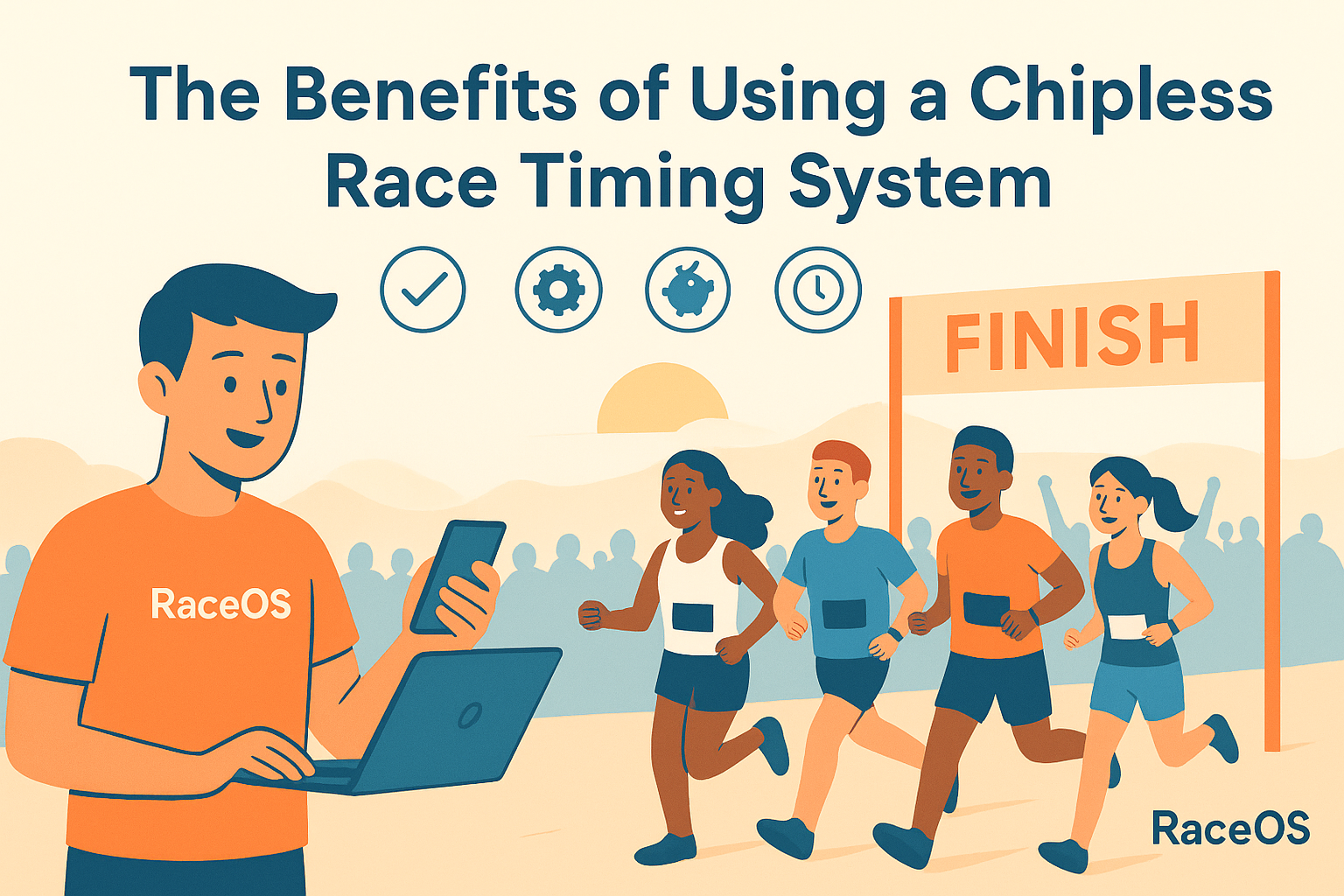

If you’re planning a race—whether it’s a 5K fun run, local triathlon, or charity fundraiser—you’ve probably asked yourself:
“Do I really need chip timing?”
The answer might surprise you.
Thanks to advances in GPS technology and smart race platforms, like RaceOS, chipless race timing is no longer a compromise—it’s a competitive advantage. Today’s chipless systems offer accuracy, simplicity, and flexibility, all while slashing your timing budget and setup complexity.
In this post, we’ll break down the top benefits of using a chipless timing system—especially for small to mid-sized events and first-time race directors.
Let’s face it: timing chips and mats are expensive. Between hardware rental, staffing, and post-race logistics, chip-based timing often eats up a big chunk of your race budget.
Chipless race timing platforms eliminate the need for all of that. Instead, participants use their own GPS devices or smartphones, and the timing platform handles the rest—from start to finish, automatically. That means:
👉 Why this matters: You save money, simplify logistics, and keep more of your revenue focused on your mission—whether that’s fundraising, community-building, or giving runners an awesome day out.
Chipless systems aren’t just more affordable—they’re faster and easier to manage, too. With a traditional chip system, you need to:
With a chipless timing solution:
It’s a turnkey setup that lets you spend less time managing equipment and more time focusing on the bigger picture—like course safety, volunteer coordination, or sponsor activation.
You might think runners prefer chips. But what they actually care about is accuracy and speed of results—and chipless timing delivers. Modern systems:
It’s cleaner, faster, and friendlier—especially for participants who already train with GPS every day. And for smaller or first-time events, it adds a level of polish and professionalism that runners will remember (and talk about).
🧠 Pro tip: Choose a system that automates result delivery and even awards—no more frantic calculations or huddling over spreadsheets after the last finisher comes through.
Chipless timing platforms aren’t just about finish lines—they’re about future planning. You’ll get access to built-in dashboards and performance data like:
This kind of real-time race data helps you improve course flow, marketing, and communication. And it makes you look like a pro when you go to secure sponsors or promote next year’s event.
If you're a race director looking for a more affordable, easier-to-manage way to run your event, chipless timing is a smart move. With the right platform, you’ll get:
Chipless timing gives you back time, budget, and peace of mind—without sacrificing quality. And most importantly, it lets you focus on building an unforgettable race experience that keeps participants coming back.
👉 Want more insights like this? Stay tuned for upcoming blog posts—or check out our previous articles where we dive into race planning, participant engagement, and modern tools that make race day run smoother than ever.
Because today’s best-timed races? They don’t need chips. They just need a smarter way to time.